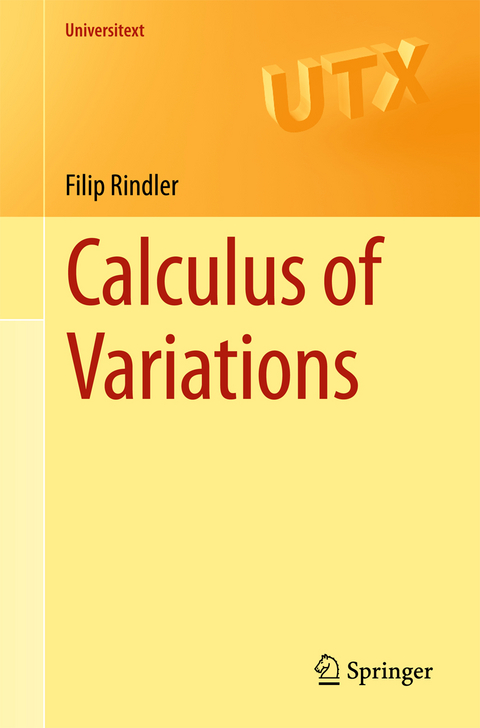
Calculus of Variations
Springer International Publishing (Verlag)
978-3-319-77636-1 (ISBN)
Starting from ten motivational examples, the book begins with the most important aspects of the classical theory, including the Direct Method, the Euler-Lagrange equation, Lagrange multipliers, Noether's Theorem and some regularity theory. Based on the efficient Young measure approach, the author then discusses the vectorial theory of integral functionals, including quasiconvexity, polyconvexity, and relaxation. In the second part, more recent material such as rigidity in differential inclusions, microstructure, convex integration, singularities in measures, functionals defined on functions of bounded variation (BV), and -convergence for phase transitions and homogenization are explored.
While predominantly designed as a textbook for lecture courses on the calculus of variations, this book can also serve as the basis for a reading seminar or as a companion for self-study. The reader is assumed to be familiar with basic vector analysis, functional analysis, Sobolev spaces, and measure theory, though most of the preliminaries are also recalled in the appendix.
Filip Rindler is Associate Professor of Mathematics at the University of Warwick, UK. His research focuses on the calculus of variations and the theory of PDEs. For 2018-2023, he leads the ERC-funded SINGULARITY project.
Part I Basic Course.- 1 Introduction.- 2 Convexity.- 3 Variations.- 4 Young Measures.- 5 Quasiconvexity.- 6 Polyconvexity.- 7 Relaxation.- Part II Advanced Topics.- 8 Rigidity.- 9 Microstructure.- 10 Singularities.- 11 Linear-Growth Functionals.- 12 Generalized Young Measures.- 13 G-Convergence.- A Prerequisites.- References.- Index.
"I have never seen a text which successfully treats Young measures, relaxation and the rather modern concept of polyconvexity at this level. ... Each chapter starts with an introductory section where the problem(s) are illustrated using simple settings, and at the end we find a short section on the history of the material and further developments, as well as a problem section. Summing up, this is a well-written and most welcome addition to the (textbook) literature." (René L. Schilling, The Mathematical Gazette, Vol. 104 (559), March, 2020)
"The purpose of this textbook is to give a comprehensive introduction to the classical and modern calculus of variations; it serves as useful reference to advanced undergraduate and graduate students as well as researchers in the field. ... This book is interesting to a reading seminar or a companion for self-study." (Hengyou Lan, zbMATH 1402.49001, 2019)
| Erscheinungsdatum | 06.07.2018 |
|---|---|
| Reihe/Serie | Universitext |
| Zusatzinfo | XII, 444 p. 36 illus., 2 illus. in color. |
| Verlagsort | Cham |
| Sprache | englisch |
| Maße | 155 x 235 mm |
| Gewicht | 694 g |
| Themenwelt | Mathematik / Informatik ► Mathematik ► Analysis |
| Mathematik / Informatik ► Mathematik ► Angewandte Mathematik | |
| Schlagworte | Calculus of Variations • convex integration • differential inclusion • Euler-Lagrange Equation • Gamma-convergence • homogenization • microstructure • minimization problem • MSC (2010): 49-01, 49-02, 49J45, 35J50, 28B05, 49Q • MSC (2010): 49-01, 49-02, 49J45, 35J50, 28B05, 49Q20 • Partial differential equations • PDE • rigidity • variational problem • Young measure |
| ISBN-10 | 3-319-77636-3 / 3319776363 |
| ISBN-13 | 978-3-319-77636-1 / 9783319776361 |
| Zustand | Neuware |
| Haben Sie eine Frage zum Produkt? |
aus dem Bereich


